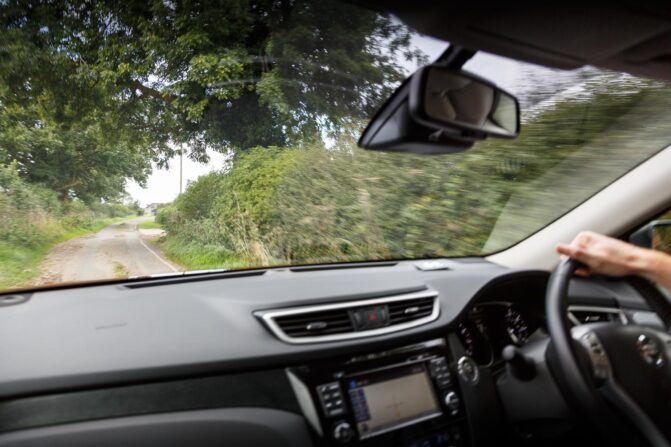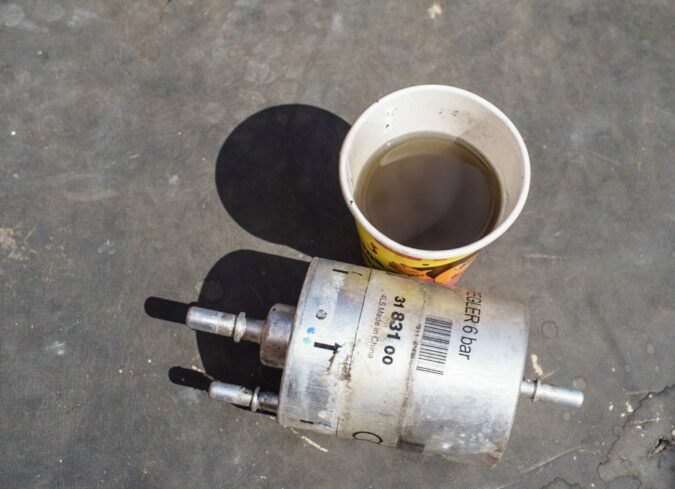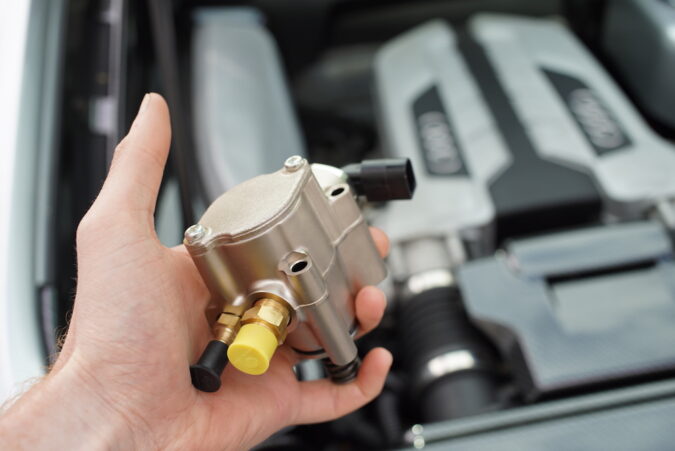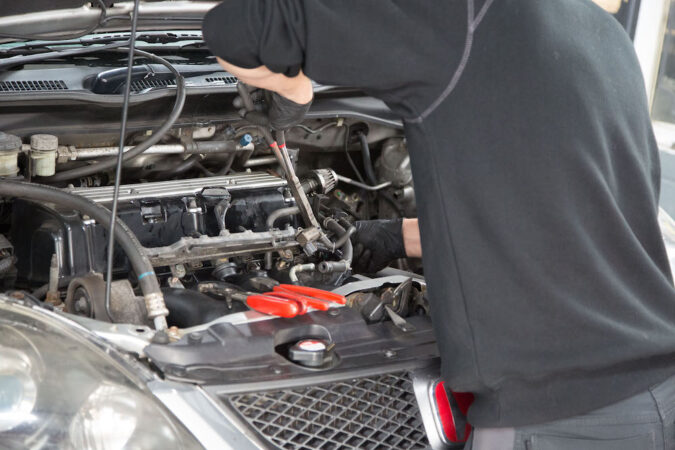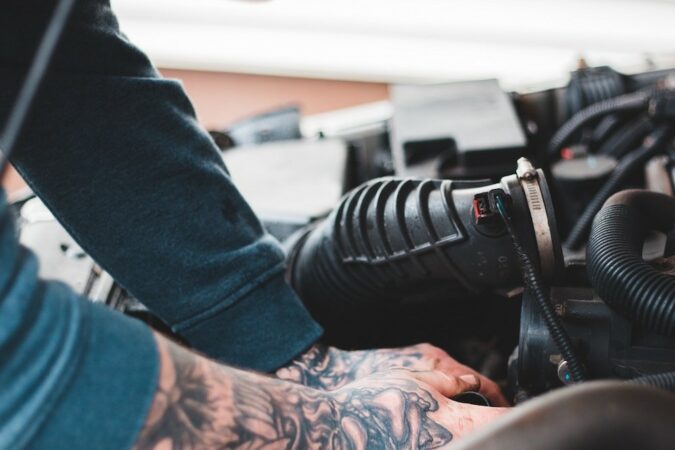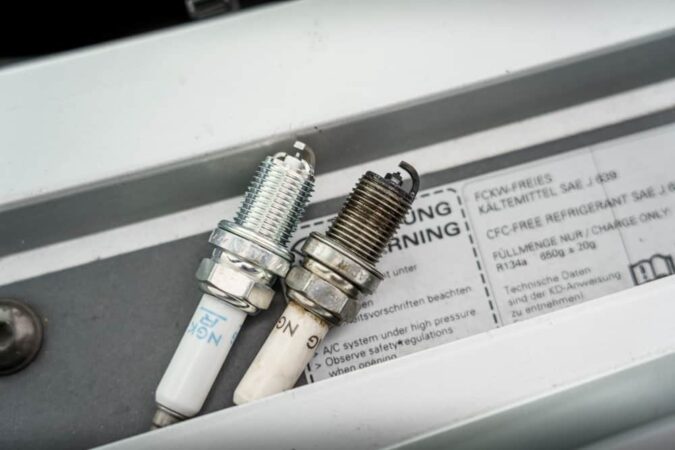As a wise man once said, you don’t often appreciate something at its fullest until you’ve finally lost it. Well, that feeling is mutual when it comes to cars. That’s especially so when you have problems such as those instances where your car dies while idling but restarts soon thereafter. As we get in our cars every single day, the one thing we expect out of it is that it’ll start up, drive, and get you from A to B.
Little did we think it would break down, or start facing issues like stalling or difficulties to even get it cranked up. We’ve gotten so used to the fact that many modern cars work so reliably, that woes like this can appear every so often. So, what can you about moments when your car dies while idling but restarts again, seemingly like it never happened? Alas, it could be attributed to many possible faults.
Those troubles may lie in the gearbox, whose goal is to set your car in motion and keep it in gear. Or, perhaps we can blame your car’s fuelling system, and its (probable) failure to maintain a hearty flow of fuel into the engine. Maybe, we’re also considering an abundance of electrical and electronics that may have prevented your car from starting. Or, how your car dies while idling but restarts again.
What Could Cause How Your Car Dies While Idling But Restarts?
To get things out of the way, we’ll first get into the possible reasons why your car dies while idling but restarts afterward without difficulty. Specifically, we’re relating to moments when you’re idling, and are just about to get going. So, you’ll shift into Park, but the engine abruptly cuts out and dies on the spot. Oftentimes, you likely wouldn’t have enough time to notice anything else besides that.
Or, perhaps there really weren’t any prior symptoms to speak of. In particular, there weren’t warning lights illuminating on the dashboard, nor was your car behaving oddly before that. So, what gives? A stalled engine could be attributed to many plausible causes. Mainly, your engine might not be getting enough fuel and/or air, which are both crucial to the combustion process that keeps an engine going.
Alternatively, faulty sensors and actuators may fail to provide input and feedback to the ECU. And, in the latter’s confusion, prompts the engine to shut off while idling. Otherwise, we may attribute how your car dies while idling but restarts to bad ignition systems, failing to ignite the air-and-fuel mixture in the engine. A failing transmission may also fail to pass along the engine’s power to the wheels.
As you can see, there are a wide array of possible causes of why your car dies while idling but restarts again. We’ll be discussing them with greater depth down below, as we get into the nitty-gritty of the underlying issues. But for now, here’s a quick TL;DR list of what might have gone wrong:
- Clogged fuel filter
- Bad fuel pump
- Dirty fuel injector
- Damaged mass airflow (MAF) sensor
- Faulty oxygen (O2) sensor
- Defective idle air control actuator
- Clogged EGR valve
- Bad spark plugs
- Failing transmission
1. Fuel Delivery Issues, Causing Your Car To Die While Idling But Restarts
First, we’ll discuss some fuel delivery and fuelling problems that may have resulted in a situation where your car dies while idling but restarts. Naturally, your engine requires some fuel (be it gasoline or diesel) to burn to keep it going. Though it doesn’t need as much of it while idling compared to the instances where you’re hard on the throttle. Still, some fuel is required to provide life to the engine.
Without a sufficient circulation of fuel to the engine, it would quite easily stall out or die. Among the most typical fuel supply-related issues to have caused your car to stall includes a clogged fuel filter, a bad fuel pump, or dirty fuel injectors. Here’s how each of them plays out in the case of how your car dies while idling but restarts again, either immediately following this or otherwise:
1.1. Clogged Fuel Filter (Preventing Fuel From Getting To The Engine)
In every vehicle’s fuelling system there’s an item called the fuel filter. Often, it’s placed somewhere in between the gas tank and the engine. As its name suggests, a fuel filter is made to filter out debris, impurities, contaminants, dirt, and so on in the gasoline or diesel, before it reaches the engine.
As you can imagine, having all of this circulating inside the fuel isn’t ideal. When it finally gets into the combustion chamber, impurities can (or will, depending on how concentrated they are) impact how the engine performs. Too much dirt in the fuel could easily cause your car to stall out.
It’s not likely that contaminants like this are prevalent in most modern cars, however. This is thanks to the inclusion of a fuel filter. Unfortunately, the fuel filter itself may have been the cause of how or why your car dies while idling but restarts. Specifically, once it’s clogged up and impeding fuel flow.
Given time, your fuel filter needs to be replaced, which most recommend that you do every 20,000 to 30,000 miles. That’s because it can get clogged up by catching and keeping hold of those impurities. If there’s too much of it blocking the fuel filter, that’ll starve the engine of much-needed fuel.
1.2. Bad Fuel Pump (Not Supplying Fuel To The Engine)
While the fuel filter catches debris floating around in the gas or diesel, your car’s fuel pump is needed to keep it circulating, in the first place. A fuel pump’s job is to create pressure and force fuel to start flowing from the gas tank to the engine. This transfer of fuel needs to always be consistent.
However, it’s possible that the fuel pump has failed, or isn’t working right. This isn’t as likely though, seeing how most fuel pumps are designed to last 100,000 miles at least, sometimes close to 200,000 miles. But if and when it does fail, the cascading effect will prompt a drop in fuel pressure.
Without enough fuel getting into the engine (owing to a failing or faulty fuel pump), the engine will stall. Note, this is especially noticeable and consequential at lower speeds or when you’re idling. Fuel pumps can fail for a few reasons, which include (but aren’t limited to):
- Fuel contamination, as debris and moisture could corrode or accelerate wear on the fuel pump.
- Blockage or obstacles in the fuelling system (e.g. a blocked fuel filter), putting a massive strain on the fuel pump.
- Starving or fuel (or constantly driving with a low or near-empty tank), as the fuel pump is dependent on fuel for both cooling and lubrication.
- Failure in the wiring harnesses, connectors, or cabling around the fuel pump, such as burning and short-circuiting.
1.3. Dirty Fuel Injectors (Not Supplying Fuel Properly)
At the very end of the fuelling system, which leads into the engine, we have the fuel injectors. Its role is as the name implies, with solenoids and valves injecting a precise amount of fuel into the engine. A fuel injector works with tight tolerances and injects fuel based on input from the ECU.
Or, the ‘engine control unit‘, which some automakers refer to as the ‘engine control module’ (ECM) or ‘powertrain control module‘ (PCM). Based on how much air is rushing through the intakes and going into the engine (alongside other data collected by sensors), a set amount of fuel is injected.
This is all to ensure an optimal air-to-fuel ratio for thorough combustion to take place. Mind you, this isn’t going to happen if the fuel injectors fail. Typically, they’re made to last between 50,000 to about 100,000 miles or more. Yet, they’re still susceptible to premature failure if not cared for.
One example of this is how the fuel injectors can get dirty. Just like the fuel filter, impurities, debris, or contaminants in the fuel could still make their way to the fuel injectors. Subsequently, clogging it up. As a result, your fuel injectors either can’t spray at all or spray fuel erratically into the engine.
Other causes of fuel injector failure include:
- Excessive heat soaking, as fuel rapidly evaporates in the injectors to leave behind waxy deposits that clog it up.
- Failure in one or more solenoids, which ultimately opens and closes a pintle that allows fuel to be injected into the engine.
- Too much blow-by, which should’ve been captured by the air filters, but might otherwise allow oil and fuel to form a sludge that can block the injectors.
- Cracks form in the fuel injectors, which might cause it to start leaking fuel.
2. Electrical Woes, As Your Car Dies While Idling But Restarts
Now, we can take a look at your car’s many sensors, particularly those that feed information to the ECU concerning combustion. Remember, the ECU is reliant on the information that has been collected by these sensors. For instance, how much air is passing into the combustion chamber. With this input in mind, the ECU can compensate for that with a precise injection of fuel to keep the engine running.
Should these sensors fail to provide feedback, the ECU might (as one example) supply and spray too little fuel into the engine. Thus, starving your car of fuel to maintain idling, and causing it to die. On top of that, the ECU also manages and controls various actuators and valves that are crucial for an engine to function. Should even one of them fail, it may be why your car dies while idling but restarts.
2.1. Bad MAF Sensor (Failing To Read The Flowrate Of Intaking Air)
At the very front of your air intake, you may encounter a tiny little module called the MAF sensor. Or, the ‘mass airflow’ sensor, whose functionality is pretty straightforward. A MAF sensor measures the volume and flow rate of air rushing past the intakes, and passes that data on to the ECU.
Now, the ECU knows just how much air is heading into the engine. It could then tell the fuel injectors the right amount of fuel to spray, so that your engine could combust ideally, with the right air-to-fuel ratio. Nevertheless, your ECU would be left clueless if the MAF sensor is showing signs of failure.
It may result in the ECU not spraying enough fuel, or supplying too much of it. Either way, resulting in your car dying while idling. Most of the time, an MAF sensor’s inability to function isn’t caused by any severe failure or damage whatsoever. Rather, it might’ve been dirtied up by debris in the air.
In this case, a good cleaning is more than sufficient to clear away the clogging that’s messing up the airflow readings. Alternatively, the MAF sensor may have other woes outright, which includes:
- Faulty wiring or other electrical problems, such as corroded connectors, short- or open-circuiting, and frayed wires.
- Damaged measuring elements that are unable to measure correctly, or measuring elements that are drifted from their original specifications and tolerances.
- Regular wear and tear, due to vibrations and heat. Or, it might’ve been damaged during an accident or frontward collision.
- Oil contamination is likely due to internal oil leaks by the PCV (positive crankcase ventilation) system, which affects the MAF sensor’s readings.
2.2. Faulty O2 Sensor (Failing To Read The Amount Of Unburnt Oxygen)
On the opposing end of the MAF sensor, we have oxygen (or simply abbreviated to O2) sensors. Yes, we’re using the plural form, as many cars these days feature more than one O2 sensor. Usually, you’ll find one in the exhaust manifold, and another one near or around the catalytic converters.
As you know, an engine’s combustion process leaves behind by-products in the exhaust fumes. These are typically toxic gases, but they might also include oxygen. As these fumes flow out of the engine, the O2 sensors are responsible for gauging the amount of oxygen (if any) within the fumes.
Ordinarily, thorough and complete combustion shouldn’t leave behind any or a significant amount of excess oxygen. Seeing too much oxygen in the exhaust fumes is a sign that your engine isn’t able to burn right. Maybe, your engine’s running lean, with too much air to burn, and not enough fuel?
If that’s so, it would immediately be picked up by the O2 sensors, which would inform the ECU. Now, your ECU will start making adjustments where necessary, such as pumping in more fuel in a running-lean situation. Should your O2 sensor fail, the ECU would of course be left guessing.
Reasons, why your oxygen sensors are failing, can include:
- Bad wiring and electrical systems, such as a failed heating element, short- or open-circuit, and maybe corrosion and damage by the connectors.
- Excessive contamination of fuel, oil, lead, sulfur, or other combustion by-products being exhausted out of the combustion chamber.
- High temperatures or overheating of the exhaust fumes, which rapidly decreases the lifespan of your O2 sensors.
2.3. Defective Idle Air Control Actuator (Not Keeping The RPMs Steady)
One of the most pivotal modules that need to work right when your car is idling is the idle air control actuator. This component communicates directly to the ECU. Its sole responsibility is to ensure that your engine speeds (RPM) are kept steady and are managed properly while you’re idling.
Depending on input from your MAF and O2 sensors, the ECU tells the idle air control actuator to keep the RPMs hovering around the optimal range. The goal is to prevent the RPMs from erratically fluctuating or revving pretty high up. Either one causes a poor-running and inefficient engine.
Meanwhile, they also make sure that the RPMs don’t drop too low. At which point, it might cause your car to stall and die while idling. This will happen if your car’s idle air control actuator fails. There are a couple of causes why your idle air control system fails or is perhaps unable to work right:
- Clogging up the idle air control actuator valves, as contaminants and particles in the air can impede airflow into the engine.
- Too much carbon build-up around the valves, which may cause it to misread or incorrectly report to the ECU on your RPMs.
- Failure of the solenoids in the air control actuator valves, cutting off electric inputs to make the valve function properly.
3. Clogged EGR Valve (Preventing Exhaust Fumes To Enter The Engine)
As a key part of many newer cars’ emissions control systems (to learn more about it, check out our explainer on do all cars have a catalytic converter), you’d find an EGR system. Or, ‘exhaust gas recirculation’. Once again, its function is fairly easy-going, as its role is to recirculate a portion of your exhaust fumes back into the engine. The goal is to decrease the engine temperature.
Note, your exhaust fumes will mostly contain carbon dioxide (CO2) and nitrogen oxide (NOx) as the most prevalent by-products of the internal combustion. Neither of which, could burn when ignited. Thus, the EGR recirculates a set amount of both CO2 and NOx back into the combustion chamber.
As CO2 and NOx don’t burn, it effectively helps to lower your engine temperature. Nonetheless, this won’t be possible if the EGR valve isn’t working as it should. Without a sufficient flow of exhaust fumes into the combustion chamber, it may impact your ECU’s air-to-fuel ratios.
Ultimately, it could lead to the engine running inconsistently, or being down on power. Both of which consequently result in the engine stalling, particularly while idling. EGR valves might fail to operate as intended for a few reasons:
- Clogged up by exhaust fumes, carbon deposits, and other by-products that prevent exhaust fumes from flowing into the engine.
- Sticky valves that leave the EGR stuck wide open, which can lead to an excessive amount of exhaust fumes circulating into the engine, causing it to stall due to an imbalanced air-to-fuel ratio.
4. Bad Spark Plugs (Failing To Ignite The Air And Fuel Mixture)
So, here’s another typical cause of why your car dies while idling but restarts. Most of you may know what spark plugs are, and what they do. In short, their task is to create a spark, thus igniting the air and fuel mixture already being compressed inside the engine. Hence, combustion occurs.
This won’t be the case should your spark plugs fail, or have worn out. In doing so, they might either fail to create a spark or do so inconsistently. Note, engines commonly have one spark plug for each cylinder. Rather than affecting all of them, perhaps it’s only one or a few that have conked out.
Nonetheless, if even one of your spark plugs has failed, it’s sufficient to impact the engine’s overall performance. Among them, resulting in less power being generated by the engine, as your car stalls out while idling. At higher speeds, you’ll also notice other symptoms such as misfires.
A few reasons why your spark plugs have gone bad include:
- Contamination due to oil being burned inside the combustion chamber, leaving behind an oily deposit and residue on the spark plugs’ tip.
- Overheating due to pre-ignition or otherwise, as overly high temperatures will accelerate wear on the spark plugs.
- Fouled-up spark plugs with too much carbon build-up, which can sometimes be caused by letting your car idle for too long.
- Poorly installed spark plugs, leaving far too big of a gap for proper arcing to occur, further putting stress on the spark plugs.
- Bad or compromised wiring (and perhaps loose or disconnected connectors) leading to the spark plugs, failing to provide enough voltage.
5. Failing Transmission (Unable To Transmit The Engine’s Power)
This is primarily applicable to those of you with automatic gearboxes, not manuals. In its design, an automatic transmission receives power from the engine through a torque converter. As such, it could then transmit the engine’s power to the rest of your drivetrain, and onto the driven wheels.
Torque converters and gearboxes as a whole are made to last. But, they may fail prematurely if not cared for. When the torque converter fails (or is showing early signs of failure), it won’t be able to transmit the engine’s power. Therefore, causing it to stall and die, even while you’re just idling.
Alongside a worn out or faulty torque converter, other reasons why your (automatic) transmission might cause your car to stall could include:
- Defective torque converter solenoid, as it’s unable to appropriately manage the operation of the torque converter.
- Low (automatic) transmission fluid levels, which cause a drop in hydraulic fluid pressure, which is necessary for a torque converter to function.
Conclusion On Car Dies While Idling But Restarts (And Fixes)
As we wrap up our look at why your car dies while idling, we should discuss the costs associated with fixing the abovementioned issues (including the parts and labor rates):
- Fuel Filter – $50 to $200 for a complete replacement.
- Fuel Pump – $100 to $1,000 for a replacement (varying wildly on your car’s make and model, how easy it is to reach the pump, and what type of pump you’re using).
- Injector(s) – $800 to $1,500 for replacements (differs a lot based on your car’s make and model, or how many injectors need replacing). Or, you could spend as little as $10 to $15, if the fuel injectors could be cleaned instead of replaced outright.
- MAF Sensor – $100 to $500 for a total replacement, or less than $10 for a bottle of MAF sensor cleaning solutions if it’s still salvageable.
- O2 Sensor – $50 to $300 for a replacement (just one unit), or around $10 for a bottle of O2 sensor cleaning solutions if it’s applicable.
- Idle Air Control Actuator – $100 to $500 for a replacement, or much less than that if you could simply clean it instead.
- EGR Valves – $150 to $550 for a complete replacement, or just around $30 for a bottle of EGR cleaner if it’s not too badly clogged.
- Spark Plugs – $50 to $250 (it’ll depend a lot on how many spark plugs need swapping, and what types of spark plugs you’re using).
- Transmission – $500 to $1,000 to replace the torque converter, or between $100 to $500 if you need to replace the solenoids. If you’re running low on transmission fluid, a quick change will set you back around $100 to $250.

